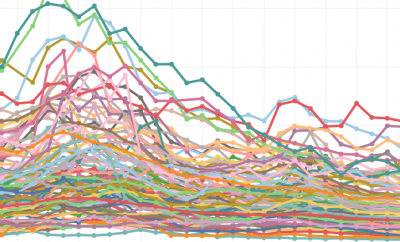Occidental College is a liberal arts school located in the Eagle Rock neighborhood of Los Angeles, California. Forcible sex offenses were the largest contributor to the school’s high crime rate, making up 82 of the 85 reported violent crimes between 2011 and 2013. The Campus Safety Department at Occidental uses 14 full time, certified, uniformed officers who conduct 24/7 patrols.
In 2013, issues with Occidental’s handling of sexual assaults led students to file a Title IX complaint against the school. The school later admitted that it failed to properly report forcible sexual assault incidents on its campus. The complaint led Occidental to hire an outside investigator to review its policies and also led to an investigation by the Department of Education. Since then, the school has been very diligent about reporting all crimes on campus and has taken measures to keep the student body safe–including engaging in discussions about crime with incoming students and directly discussing issues on its website.
Of the 82 cases of rape reported in the three-year period, 60 were reported in 2013, which was after the school adjusted its policies relating to sexual assault. Because the spike occurred after Occidental changed its policies, the increase is likely more related to improved reporting practices rather than a significantly higher number of incidents. Occidental is currently listed on the Department of Education’s Title IX watchlist, which means the school is under investigation for possible violations in its sexual assault policy. Since forcible sexual offenses are the largest factor in the school’s violent crime rate, administrators acknowledge past reporting errors and have taken steps to encourage victims to report their cases. However, the school’s new policies are not free from criticism; a recent rape case at Occidental sparked debate about whether schools are starting to overreact to these cases with harsh punishments.
Jim Tranquada, Occidental’s Director of Communications, addressed the rise in reported forcible sex offenses in an email saying, “we believe this increase was primarily due to the increased awareness of Title IX issues and reporting and support options at Occidental. Sexual assault is an underreported problem, and as odd as it may sound when discussing crime statistics, we see an increase in reports as a positive development — it means more survivors are coming forward.”
Fall 2013 Enrollment: 2,128 (all undergraduate)
Average Violent Crime Rate: 14.10 per 1,000 students
Murder: 0
Forcible Sex Offense: 86*
Robbery: 2
Aggravated Assault: 2
Campus Setting: City (Large)
*A spokesperson for Occidental stated in an email to Law Street: “What stands out are the 64 sex offenses, which is a substantial increase over previous years. (The 2012 number was 11, for example). Of those 64 incidents, more than half — 34 — involved conduct that occurred prior to 2013: 20 in 2012, eight in 2011, four in 2010, one in 2009, and one in 2007.”
-Campus crime statistics are three year totals from 2011, 2012, and 2013
-The average violent crime rate is an average of the three-year data shown as a rate per 1,000 students
Click here to see the methodology used for the rankings.
Research and analysis done by Law Street’s Crime in America team:
Kevin Rizzo, Kwame Apea, Jennie Burger, Alissa Gutierrez, and Maurin Mwombela.
Kevin Rizzo is the Crime in America Editor at Law Street Media. An Ohio Native, the George Washington University graduate is a founding member of the company. Contact Kevin at krizzo@LawStreetMedia.com.
 Image courtesy of [Benson Kua via Flickr]
Image courtesy of [Benson Kua via Flickr]









Comments